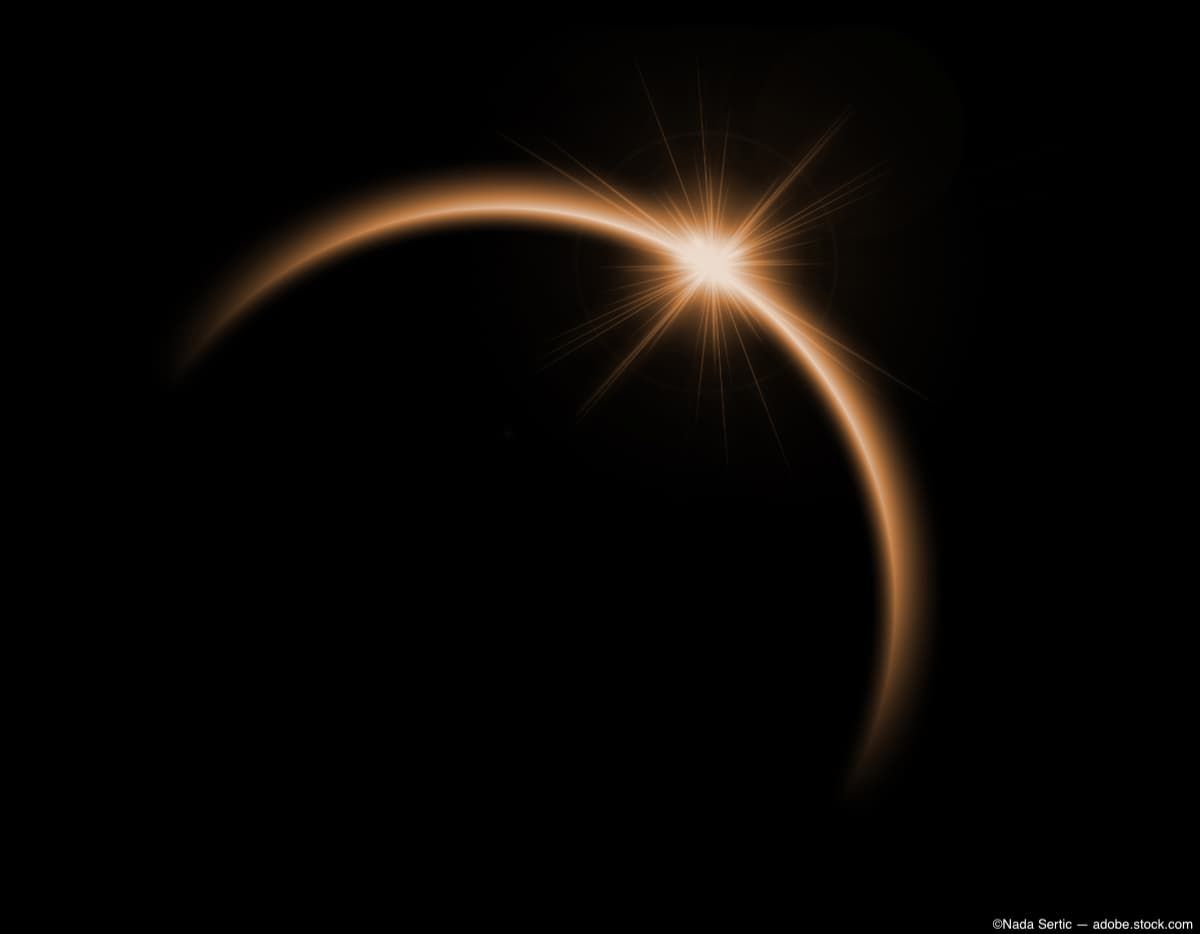Beyond the eclipse: The long-term effects of solar retinopathy
Patients can experience solar retinopathy after viewing the eclipse without protection, but it also can occur from outdoor activities, including those mentioned. It can lead to symptoms that include blurry vision, vision loss at the center of a patient’s sight and eye pain.
(Image credit: AdobeStock/Nada Sertic)

Viewing a solar eclipse, or even skiing or snowboarding, can expose individuals to solar radiation, which can lead to solar retinopathy.
Patients can experience solar retinopathy after viewing the eclipse without protection, but it also can occur from outdoor activities, including those mentioned. It can lead to symptoms that include blurry vision, vision loss at the center of a patient’s sight and eye pain.
Waiting for the condition to pass may be one course of management patients with solar retinopathy. You may also schedule follow-up examinations to monitor patients with symptoms, and educating patients that using protective eyewear is the best way to void this form of vision loss is key.
According to a study,1 eclipse viewing is the leading cause of solar retinopathy. Victims of solar retinopathy may complain of blurred vision, a central black spot and metamorphopsia.
“After 6 months the visual acuity is usually in the range of 6/5 to 6/12 but frequently with a small central subjective scotoma,’ researchers said in a study. “Visual acuity does not always recover and has reportedly remained as low as 3/60 with permanent retinal damage in the form of retinal holes and pseudoholes.”
After a week the initial deep yellow exudate shrinks and may be surrounded by a red halo followed by retinal pigment epithelium hypopigmentation with surrounding pigment clumping at 6 weeks. The appearance of a lamellar macular hole at or adjacent to the foveal reflex may develop.2
Solar retinopathy occurs as a result of exposure to direct sunlight, and the most common cause is viewing a solar eclipse.
While some patients may see their symptoms clear up in weeks or months, other patients do not fully recover their sight after solar retinopathy. Patients may require the following:
- Optical coherence tomography to examine the surface of the retina;
- Slit lamp examination to view the patient’s retina;
- Photographs of the retina to monitor changes;
- Fluorescein dye tests to monitor blood vessels
The foveal cones can prove to be resilient and resist damage from the sun’s rays and resist photochemical damage. This is why patients may see symptoms ease over time.
Suffering solar retinopathy can lead to permanent damage, and patients may experience low vision, and prevention may be the best approach, including:
- Wear a hat and sunglasses;
- Wear protective goggles while skiing or snowboarding;
- Get UV-protective lenses for your prescription eyeglasses;
- If you view an eclipse, use appropriate protective eyewear;
- Do not look directly at the sun.
Researchers concluded that patients can make an excellent recovery in the first 3 months following a solar retinal injury. They pointed out that 6/6 visual acuity was attained in 3 cases despite initial visual acuities of 6/36, 6/24 and 6/18 respectively. Persistence of foveal hypopigmentation at 3 months in two cases may have been predictive of worse long-term visual acuity as may have been significantly abnormal achromatic contrast sensitivity (ACS) and chromatic contrast thresholds (CCT).1
“Visual acuity can improve considerably in the majority of eclipse-related solar burns,” researchers concluded. “However, the persistence of visual symptoms in those with mild burns would suggest that even brief glimpses of a solar eclipse should be avoided.”
References:
Fuller DG . Severe solar maculopathy associated with the use of lysergic acid diethylamide (LSD). Am J Ophthalmol 1976; 81: 413–416
Gass JDM . Photic maculopathy. In: Stereoscopic Atlas of Macular Diseases, Vol 2 The CV Mosby Company: St Louis 1987
Newsletter
Keep your retina practice on the forefront—subscribe for expert analysis and emerging trends in retinal disease management.